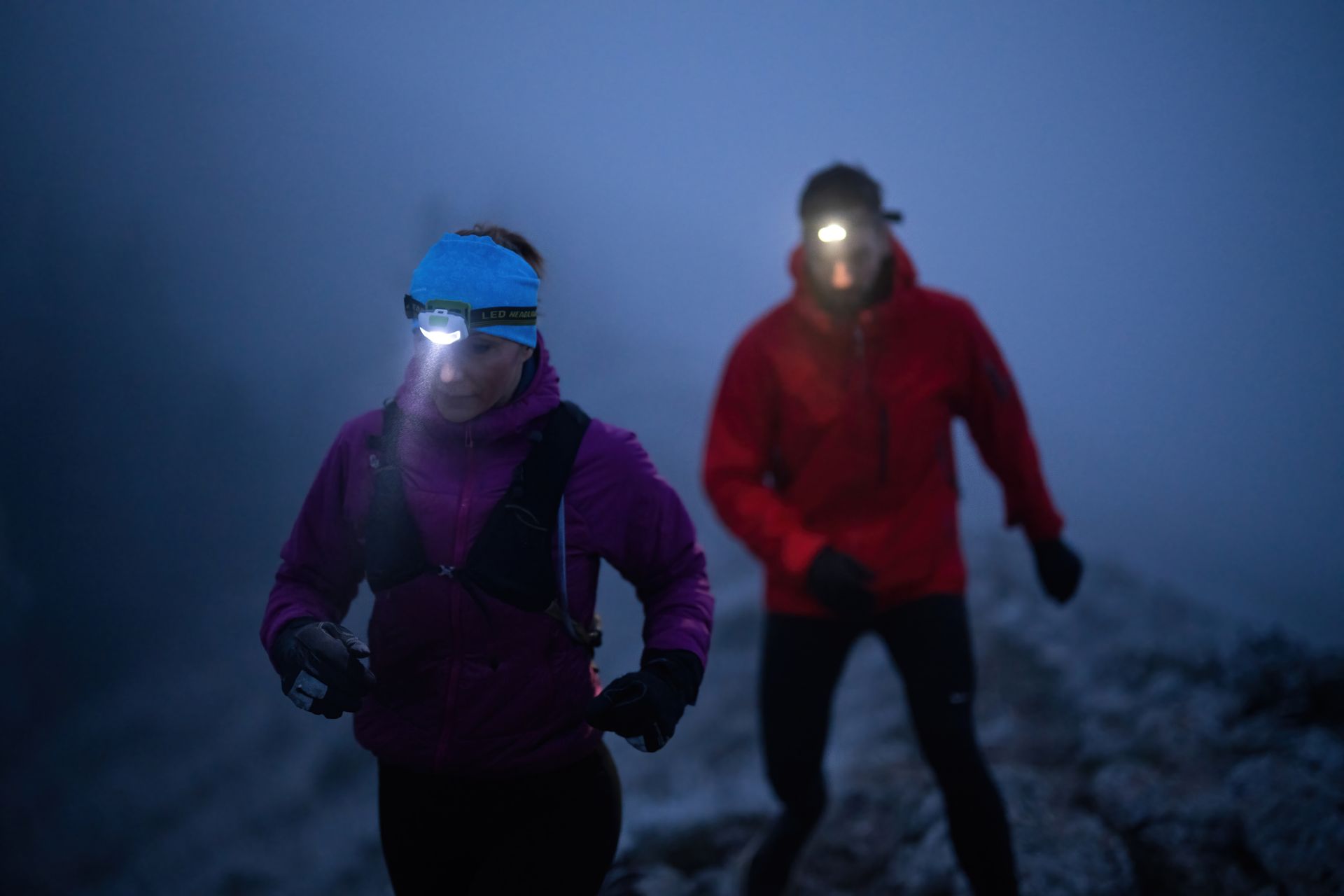
COACH'S CORNER - A Guide to Running Lights by Nick Muxlow
THE Ultimate Guide to Running Lights: staying safe and seeing clearly, with nick muxlow from the ultra journey

Why Running Lights Matter
With shorter days and many runners training before sunrise or after sunset, having the right light can make all the difference. Gone are the days of dim, battery-draining head torches that barely lit the way. Advances in lighting technology now allow runners to enjoy bright, rechargeable, and lightweight solutions to illuminate their path.
If you’ve ever struggled with poor visibility or tripped over a hidden obstacle in the dark, it’s time to rethink your lighting setup. Let's break down everything you need to know to choose the best running light.
Understanding Lumens: How Bright Should Your Light Be?
The brightness of a light is measured in lumens—the higher the lumens, the brighter the light. But how many lumens do you actually need? It depends on your running environment and speed:
- Walking or Slow Jogging: 100-200 lumens is sufficient for most paved paths.
- Road Running at Moderate Speed: 200-400 lumens provides a good balance of brightness and visibility.
- Trail Running on Technical Terrain: 400-600+ lumens is ideal, especially for descending at speed on uneven surfaces.
Finding the Right Balance: Brightness vs. Battery Life
It’s tempting to go for the brightest light possible, but more lumens means larger batteries, which can add weight and bulk. The key is balancing brightness with comfort and battery efficiency.
- Short Runs (1-2 hours): A lightweight headlamp with 200-400 lumens and a compact battery will work well.
- Long Runs & Ultras (6+ hours): Look for a light with adjustable brightness settings and a burn time of 12-24 hours to last through the night. Some models allow battery swaps for extended use.
Rechargeable vs. Disposable Batteries
One non-negotiable in my book is rechargeability. While battery-operated lights may have a lower upfront cost, they lose brightness over time and require frequent replacements. A rechargeable headlamp, on the other hand:
- Maintains consistent brightness throughout your run.
- Saves money in the long run.
- Is more environmentally friendly.
Simply recharge after every few runs, and you’ll never have to worry about dim lights again.
Key Features to Look For in a Running Light
When choosing your ideal running light, consider the following:
- Lightweight & Comfortable Fit – No bulky battery packs bouncing on your head.
- Adjustable Brightness Modes – Low, medium, and high settings help conserve battery life.
- Wide & Focused Beam Options – A mix of flood (wide) and spot (focused) lighting ensures better visibility.
- Battery Life & Replaceable Battery Option – Essential for ultra runners who need 12+ hours of light.
- Weather Resistance
- Light Rain & Road Running: If you’re running on roads or in light rain, an IPX4 or IPX5 rated head torch will be sufficient.
- Trail Running in Wet Conditions: For trail running with moderate rain or light water crossings, look for a head torch rated IPX6 or IPX7.
- Extreme Conditions & Submersion: If you’re preparing for an ultramarathon or running in areas with frequent water crossings, an IPX7 or IPX8 rated head torch is ideal.
Beam Type, Light Colour, and Reactive Lighting
Another important aspect of running lights is beam type. Some lights allow you to switch between a narrow spot beam for long-distance focus and a wide flood beam for better peripheral visibility. A combination of both is ideal for trail running, where you need to see both near and far obstacles.
The colour temperature of the light also matters. Cool white light (bluish tint) provides better contrast and sharpness, making it great for spotting details on technical trails. Warm white light (yellowish tint) reduces glare and eye strain, making it more comfortable for extended use.
For those seeking ultimate convenience, reactive lighting technology adjusts brightness automatically based on your surroundings. This means you get maximum brightness when needed (such as looking ahead on a dark trail) and reduced brightness when unnecessary (such as reading a map or looking down), saving battery life and improving comfort.
The Use of Red Light in Running
Many headlamps include a red light mode, and while it may not seem necessary at first, it has some key benefits. Red light preserves night vision, which is useful when transitioning between darkness and light, such as when reading maps or checking gear without overwhelming your eyes. Additionally, red light is less disruptive to others, making it a great option if running with friends when you re-group and don’t want to blind others.
Is It Time to Upgrade Your Running Light?
With powerful, lightweight, and rechargeable options available, there’s no reason to run in poor lighting conditions. Whether you're training for a 100km ultra or simply enjoying evening sun rise or sunset runs, investing in the right running light can enhance safety, confidence, and performance.









